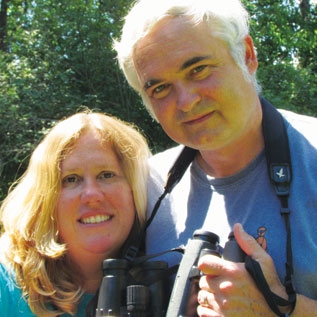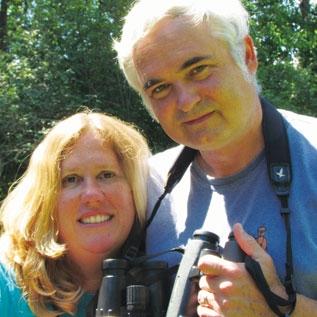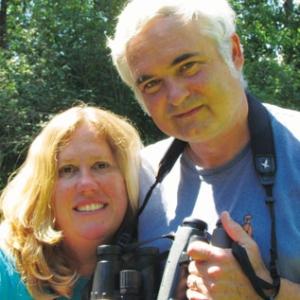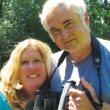Summer homes
Someone recently sent us an email about the robin nest in their yard. They also mentioned the eastern phoebe nest under their neighbor's porch eaves.
It got us thinking about less well known types of nests that most people probably are not aware of. For example, most people know that woodpeckers nest in tree cavities, but did you know that barred owls, numerous on the Boothbay peninsula, also use them?
So do wood ducks. You might think of ducks as nesting near the water's edge, but not only do wood ducks nest in holes in trees (and also in nest boxes made by humans!) their nest sites can be more than a mile from water.
There is even one flycatcher – the big, bold great crested flycatcher, a common bird in our area, with its yellow belly and rusty tail – that nests in holes. It often adds the special touch of draping an old snakeskin out the hole, presumably to deter predators.
What about those pendants hanging at the ends of branches, seemingly by a thread, that become more visible in winter? You may ask, "Are they even nests?" The answer is yes, they are the nests of Baltimore orioles.
Some of you may have experienced a mama killdeer giving an injured-wing display – calling and dragging a wing to lure you from her nest, which is little more than a scratch in the ground. You may not have realized though, that wild turkeys and ruffed grouse also lay their eggs on the ground.
And then you've got common eiders, a striking sight in Boothbay waters in summer when the downy babies are bobbing in their little groups, often guarded by several females. Did you know the females pluck their own breast feathers to build a soft and fluffy nests of down hidden under raspberries and other bushes? Typically, they are placed on an island to give them protection from predators.
Interestingly, Damariscove Island has one of the largest nesting concentrations of eiders in Maine. The island is off-limits during spring and summer to protect them.
Consider the ruby-throated hummingbird nest: the size of a child's teacup and woven with spider webs. These tiny homes are typically tucked in a leafy shrub or small tree.
Now envision the nest of the bald eagle: 4 or 5 feet in diameter and made of large sticks, sometimes weighing more than a thousand pounds. They're easily spotted in high trees above rivers and other bodies of water, boldly exposed to allow easy access for mom and dad eagles coming and going on massive wings.
In between these extremes are nests like the 3-inch diameter cottony cup nests of yellow warblers, placed a few feet up in shrubby areas, often near water. yellow warblers have the peculiar habit of building another layer of nest on top of the original one if a female brown-headed cowbird lays an egg in the nest in order to try to trick the warbler into raising it as its own.
But that's a story for another day...
Jeff and Allison Wells are native Mainers whose families have been here for hundreds of years. Allison Wells is a senior director at the Natural Resources Council of Maine; Jeff Wells is senior scientist for the International Boreal Conservation Campaign. They are the authors of "Maine's Favorite Birds."
Address
United States

























